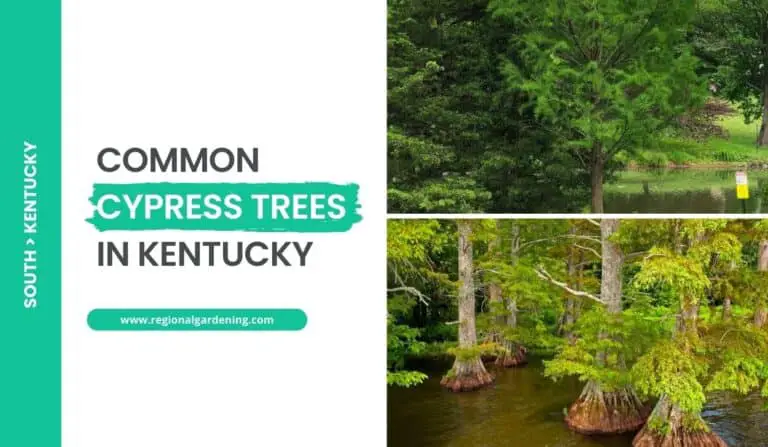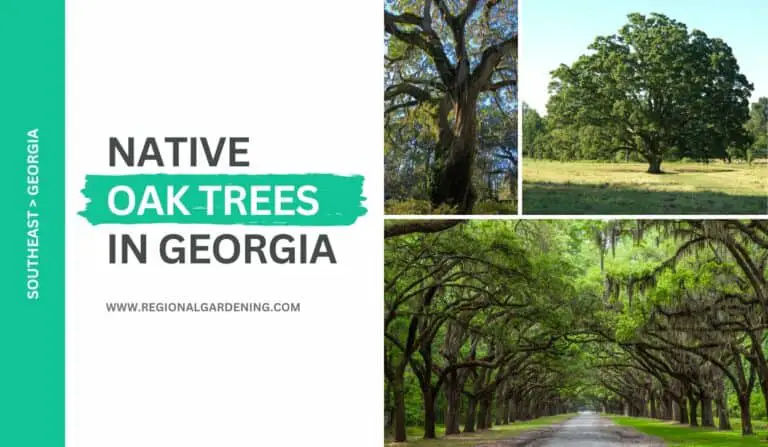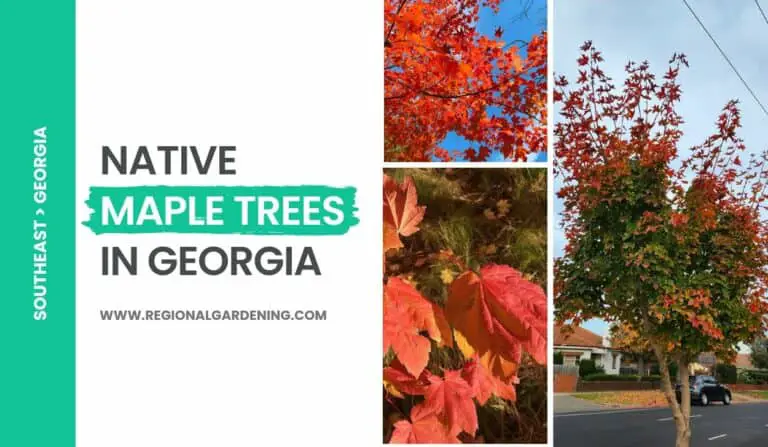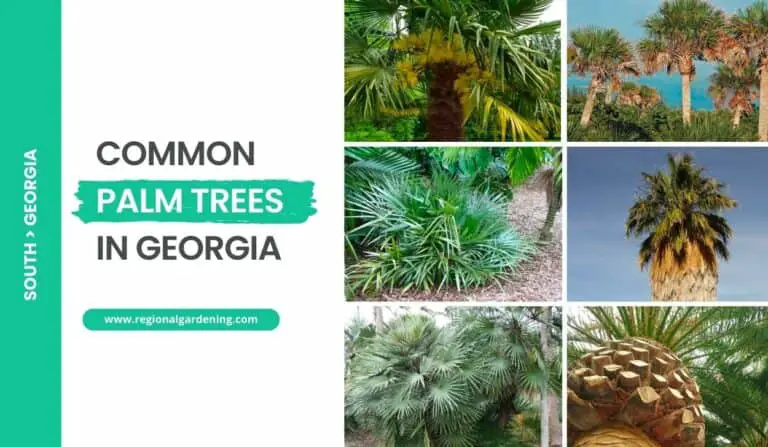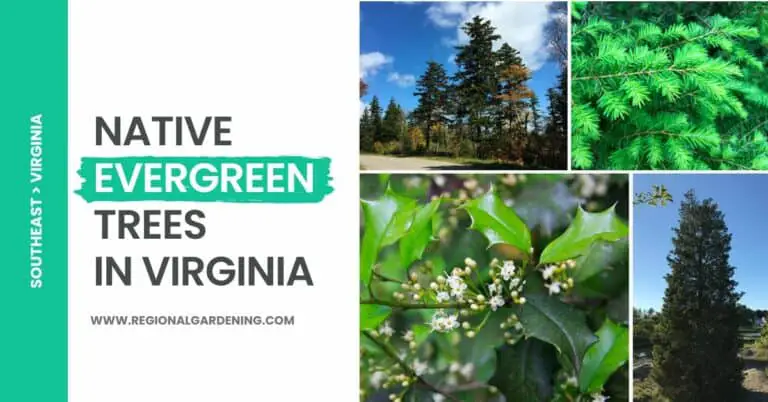3 Native Tupelo Trees In Georgia (Pictures & Identification)
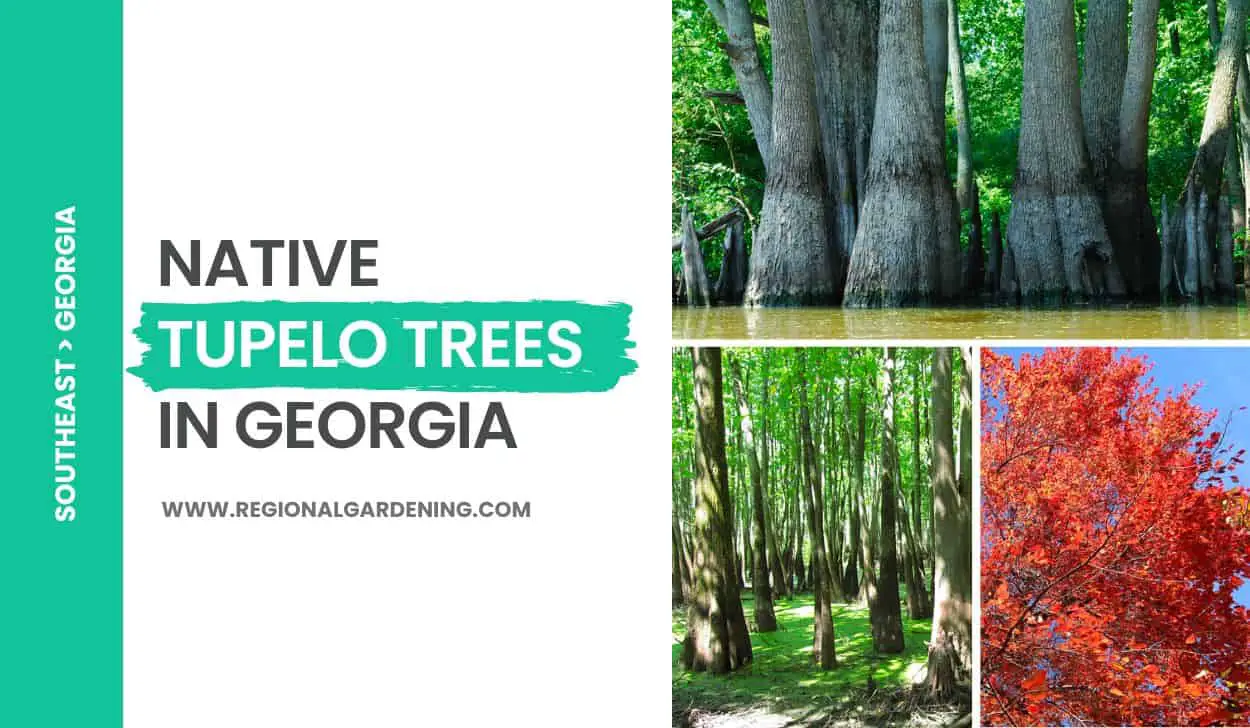
One tree that many tree enthusiasts frequently overlook is the tupelo tree, also known as a gum tree. But they are an amazing addition to the Southern landscapes and have been an integral part of Georgia’s natural beauty for centuries.
These trees are known for their striking fall foliage and distinctive bark, which make them easily recognizable in the wild.
In this article, we’ll talk about three of the native tupelo trees in Georgia. along with their pictures and tips on how to tell them apart.
1. Swamp Tupelo
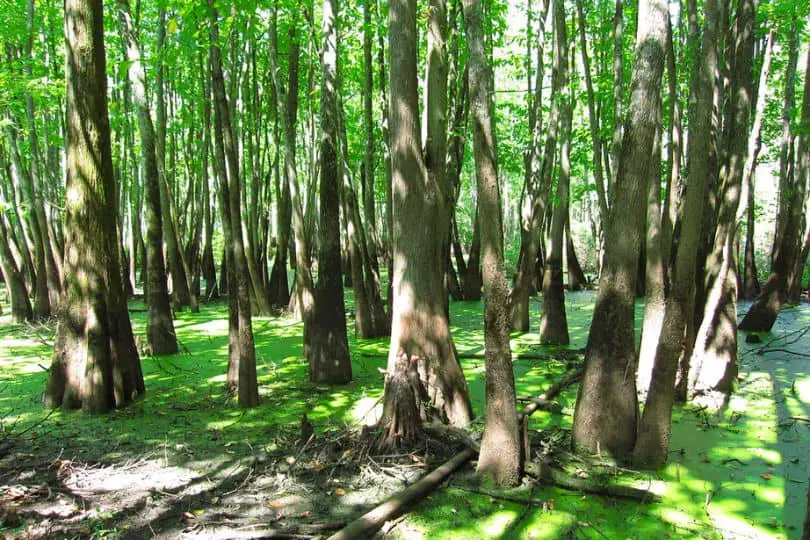
On the list of native tupelo trees in Georgia, the first one is the Swamp Tupelo, also known as the Swamp Blackgum. It is a deciduous tree that sheds its leaves in the autumn.
The oblong, smooth-margined leaves range in size from 1.5 to 4 inches in length. The top side of the leaves is glossy and dark green, while the underside is light green and smooth.
Swamp tupelo fruits are often paired, dark blue, and between a third and a half an inch in length. The pulp of the apple covers a hard, ribbed seed.
Dark grey and highly furrowed, the bark of a Swamp Tupelo tree makes for an impressive appearance.
This tree rarely grows taller than 30-40 feet, and it has a wide, rounded base that gradually narrows to a point at the top. The Swamp Tupelo is easily identified by its narrow leaves, fruit with a strongly ridged stone, and grey bark.
Swamp tupelo trees have almost white, feathery-light, pliant, and weak wood that is difficult to split. Wood from this tree can be turned into furniture, packaging, and pulp.
On the coastal plain, the Swamp Tupelo grows at the water’s edge of small “ponds” and along streams.
2. Black Tupelo
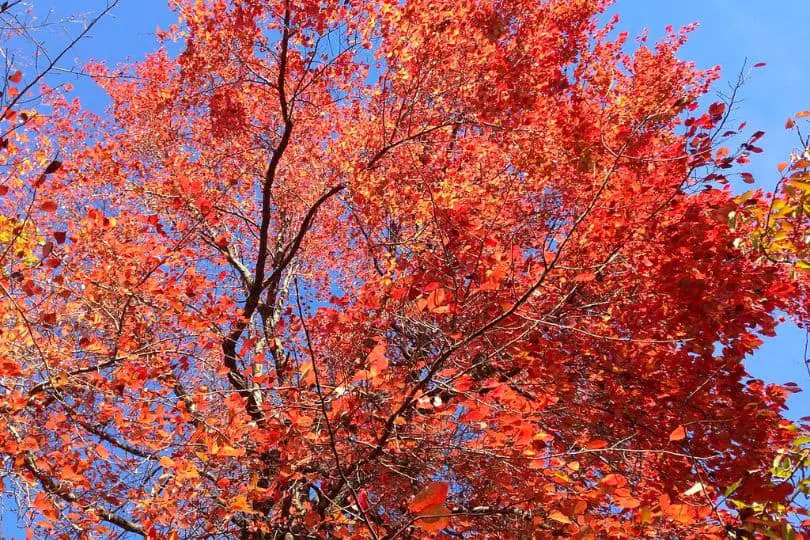
Blackgum, or Black tupelo, is among the most common tupelo trees in Georgia.
This tree’s leaves are oval, measuring 2 to 5 inches long and 1/2 to 3 inches wide, with smooth margins. The upper side of the leaves is thick, dark green, and lustrous, and the underside is pale and slightly hairy, especially towards the midrib.
The fruit of the tree is dark blue, about 1/2 inch long, meaty, sour, and bitter, and has a bony seed with unclear ribs.
The bark of the Black Tupelo is light brown and heavily furrowed, and it is frequently tinged with red. When crowded, this tree can grow up to 100 feet tall, with a trunk diameter of 3 to 4 feet and a flat-topped or pyramidal crown.
The Black Tupelo is distinguished by its elliptical and lustrous leaves, winter buds that are typically found at the ends of short lateral branches that are at right angles to the main branch, and dark blue, sour fruit with indistinctly ribbed stones.
The Black Tupelo wood is heavy, soft, strong, and tough, but not long-lasting, and it is light yellow or practically white. Box boards, furniture, interior trim, crossties, and pulp are all made from this tree.
The Black Tupelo can be found throughout the state, but it is most commonly found in wetlands along the coast, while it can also grow on steep hillsides in the mountains.
3. Water Tupelo
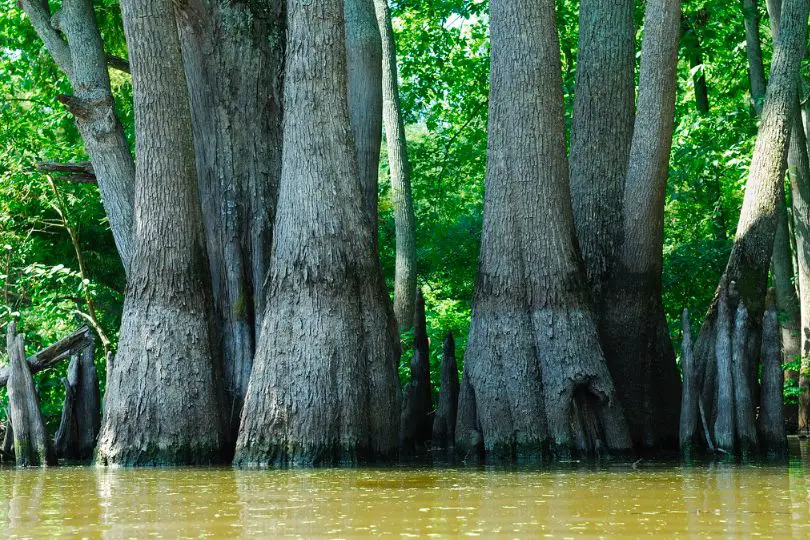
The Water Tupelo is a deciduous tree that loses its leaves in the autumn. It has long ovate leaves that are 5 to 10 inches long and 2 to 4 inches wide, with a long-pointed tip.
The leaf margins can be either smooth or coarsely toothed. The upper surface of leaves is thick, dark green, lustrous, and smooth, whilst the underside is light and hairy. Water Tupelo fruit is dark purple, about an inch long, and attached singly to the stem, with acid-tasting meat.
This tree’s bark is brownish-gray with scaly ridges. Water Tupelo can reach heights of 80 to 100 feet, with a trunk diameter of 2 to 3 feet that is usually significantly larger at the base and a thin oblong or pyramidal crown.
The Water Tupelo is distinguishable by its enormous, typically toothed leaves, large, one-inch-long fruits, and significantly larger trunk base.
Water Tupelo wood is light, soft, durable, and not particularly strong, and it is white. Box boards, furniture, interior trim, crossties, and pulp are all made from this tree. The Water Tupelo is only found in river wetlands and on the lower coastal plain.
Similar Articles
- Native Oak Trees in Georgia
- Native Dogwood Trees In Georgia
- Native Pine Trees In Georgia
- Native Maple trees In Georgia
- Native Hickory Trees In Georgia
- Native Willow Trees In Georgia
- Native Plum Trees In Georgia
- Native Magnolia Trees In Georgia
- Native Ash Trees In Georgia
- Native Elm Trees In Georgia
- Native Cottonwood Trees In Georgia
- Native Cedar Trees In Georgia
- Native Birch Trees In Georgia
- Common Purple Trees In Georgia
- Common Cypress Trees In Georgia
- Common Palm Trees In Georgia
- Common White Flowering Trees In Georgia
Sources
The Regional Gardening team makes sure that the information in our articles is accurate by only using sources that are known to be trustworthy. Some of these sources are peer-reviewed journals from government agencies, well-known universities, and scientific research organizations.
- Georgia Native Plant Society
- College Of Agricultural & Environmental Sciences, University Of Georgia
- Native Plants Books, Georgia Native Plant Society
- Georgia Forestry Commission
- Native Plants Of North Georgia, University Of Georgia


